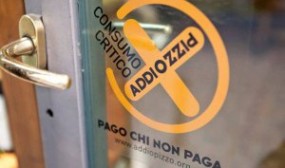Posted on 25 Nov 2020
Julio Valdivia was worried; more than ever before. He tripled his meals and the noises of cars outside his house woke him up. The agony lasted three days. Then he was killed. Julio Valdivia was worried like never before. He had started eating erratically, and the sound of every passing car would wake him up. The torment lasted three days. Then he was killed.
The night before the call came, he had barely slept. It was 9 September 2020. ‘I won’t take long – I’ll be right back,’ he told Guadalupe, his wife, after hanging up. He then left on his motorcycle without saying who had called. Later that day, at around four in the afternoon, reporters began notifying WhatsApp groups that a body had been found on the railway line in Tezonapa, Veracruz, a state located along the Gulf of Mexico.
The victim had been beheaded with a chainsaw and his murderers had left his dismembered limbs on the tracks. His friends were able to identify him from the gruesome remains thanks to a distinctive strand of grey amid his otherwise black hair and because he was wearing a shirt with the logo of the newspaper El Mundo de Córdoba. It was Valdivia, his co-workers confirmed.
Valdivia’s murder was the 25th killing of a journalist in the last eight years in Veracruz, a place considered the most dangerous for journalists in Latin America, according to NGO Reporters Without Borders. His murder revealed the risks of reporting on violence in Tezonapa, a municipality where three Mexican states and at least two criminal groups converge. Three journalists have been killed there since 2015. Here, criminals set the agenda for reporters – their threats tell them what they can, but especially what they cannot, write about.
Valdivia, who was 43 when he was murdered, earned less than 142 Mexican pesos a day (US$7) in an environment where labour conditions are precarious, said Jorge Morales Vázquez from the Comisión Estatal para la Atención y Protección de los Periodistas (a government organization that protects and supports journalists in Veracruz). He added:
We are talking about a region [Tezonapa] where you don’t go out after a certain hour – not even the cops do, because they are afraid of being attacked. We are talking about remote places, where rule of law is absent and institutions are weak; about criminals and caciques [political bosses or powerful people in rural areas] that impose their own law. … Julio was trapped in that world.
Underneath the region runs the Matapionche–Camerino Z. Mendoza oil pipeline, part of Petróleos Mexicanos, the biggest state-owned oil company in the country. The place had been a hotbed of fuel theft until 2017, when the Mexican government stopped transporting fuel through pipelines. This brought the problem under control, but it also unleashed other, more violent ones. At least two criminal groups switched from stealing fuel to kidnapping and extorting local businesses. And in a bid to take control of the region, criminals started fighting in the streets, making Tezonapa and its surrounds the focus of the crime pages of Veracruz’s newspapers.
The violence was intense. Valdivia reported that, between 11 April 2020 and 15 May 2020, 16 people had been murdered in Tezonapa and neighbouring Cosolapa and Acatlán de Pérez Figueroa, in Oaxaca. These included policemen, suspected criminals and two children, aged four and seven. To date, none of these murders have been solved.
On 6 January 2020, along with other journalists from the region, Valdivia reported on how an organized-crime group had delivered Christmas gifts to poor children. Armed members of the group delivered goods, bearing the gang’s name, to children and parents in various towns and villages. Journalists explained that the aim of this seeming largesse was to elicit empathy towards the gang among the communities.
A month later, on 29 February, Valdivia – and other media outlets – circulated a photograph that showed a number of armed and hooded men posing defiantly under a sign that read ‘Welcome to Tezonapa’ at the entrance of the town.



